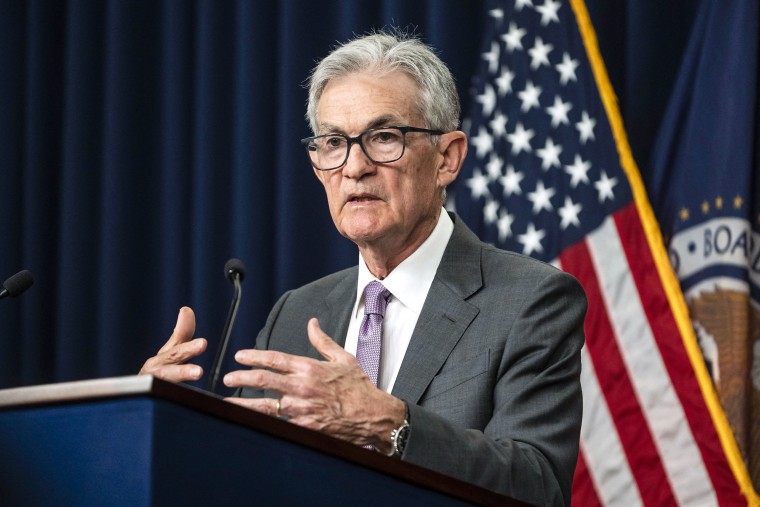Jerome Powell has no plans for another big rate cut like the last one.
Speaking in Nashville on Monday, the Federal Reserve Chair made it clear that the aggressive half-point interest rate cut we just saw isn’t the new normal.
From here on out, any rate cuts will be smaller, most likely in quarter-percentage-point steps.
Powell pointed out that the Fed needs to balance lowering inflation without messing with the labor market too much.
Market reactions to Powell’s remarks
The Fed is going to take things one step at a time. Powell said that he’s not going to be pressured into bigger cuts just because that’s what some on Wall Street expect.
Two more cuts are on the table for this year, but they won’t be huge. As Powell laid out this plan, stocks reacted negatively.
The Dow Jones Industrial Average dropped over 150 points, and Treasury yields went up. The 10-year Treasury yield, a key benchmark, hit close to 3.8%.
This jump was around 5 basis points higher than earlier in the session. Traders didn’t exactly love the news that smaller cuts were coming.
This all comes not long after the Federal Open Market Committee approved a rare half-percentage-point reduction. This type of move, 50 basis points in a single meeting, is highly unusual.
The Fed usually only takes such big steps in times of crisis, like the 2008 financial collapse or the 2020 pandemic. Market players had expected that cut, but the size of it still raised eyebrows.
Powell acknowledged that the decision for the large cut was part of a necessary recalibration. The Fed started its aggressive rate-hiking cycle in March 2022, fighting runaway inflation.
What’s next?
“This is not a committee that feels like it’s in a hurry to cut rates quickly,” Powell said during a Q&A with Morgan Stanley economist Ellen Zentner.
If everything stays on track, that means we’re looking at a total of 50 basis points in cuts for the rest of the year.
As for the next meeting on November 6-7, the market is predicting a quarter-point reduction, not another half-point slash.
But traders are betting on a larger move at the December meeting, with many expecting a more aggressive cut then.
The inflation rate in August was about 2.2% annually, according to the Fed’s preferred measure, the consumer price expenditures index.
That’s close to the Fed’s goal of 2%, but there’s a catch. Core inflation (excluding volatile items like gas and groceries) is still running at 2.7%.
Core inflation matters more because it reflects longer-term trends, which is why Powell isn’t ready to declare victory yet.
One of the most stubborn aspects of inflation is housing-related costs, which rose 0.5% in August. Powell did note that housing inflation has started to ease, but it’s happening slowly.
Rents for new tenants are growing at a slower rate, which could help bring down overall housing inflation over time.
Meanwhile, stocks didn’t take the news of smaller cuts well. On Monday, the Dow Jones dropped 222 points, with the S&P 500 and Nasdaq Composite also slipping by 0.2% each.





